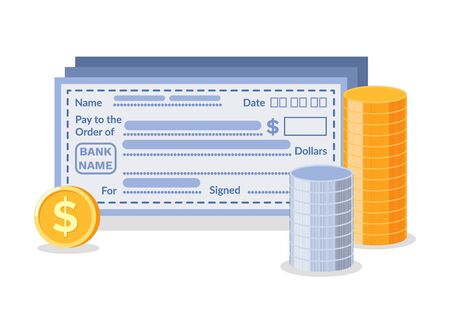1. Understanding Revenue Streams in the US Market
When you’re running a business in the US, understanding your revenue streams is the first step to achieving positive cash flow. Revenue streams are simply the different ways your business makes money. In today’s competitive market, companies use both traditional and innovative methods to generate income.
Common Revenue Streams
Most businesses in the US rely on several tried-and-true sources of revenue:
| Revenue Stream | Description | Example Industries |
|---|---|---|
| Direct Sales | Selling products or services directly to customers, either in-person or online. | Retail, Restaurants, E-commerce |
| Subscriptions | Charging customers a recurring fee for access to products or services. | Streaming Services, SaaS, Fitness Centers |
| Online Channels | Generating sales through digital platforms like company websites, marketplaces, and social media. | E-commerce, Digital Products, Influencer Brands |
| Value-Added Services | Offering additional features or premium options for an extra fee. | Telecommunications, Software, Automotive |
Innovative Ways to Generate Revenue Stateside
Apart from the traditional approaches, many American businesses are thinking outside the box to boost their income. Some popular examples include:
- Freemium Models: Offering basic services for free and charging for advanced features.
- Loyalty Programs: Encouraging repeat purchases by rewarding loyal customers.
- Affiliate Marketing: Earning commissions by promoting other companies’ products on your website or platform.
- B2B Partnerships: Collaborating with other businesses to bundle services or cross-promote offerings.
The Importance of Diversifying Revenue Streams
Diversifying how your business makes money helps protect you from market fluctuations and changing customer preferences. For example, if direct sales slow down during a tough economic period, subscription fees or value-added services can help keep your cash flow steady.
Key Takeaway for US Entrepreneurs
The most successful companies in the US market don’t rely on just one way to make money. By exploring both common and innovative revenue streams, you can build a more resilient business—and put yourself in a better position to balance your revenue and expenses for positive cash flow.
2. Identifying and Managing Core Expenses
Understanding Fixed and Variable Costs in US Businesses
To keep your cash flow healthy, it’s crucial to know what you’re spending money on each month. In the US market, business expenses generally fall into two categories: fixed costs and variable costs.
| Type of Expense | Description | Examples |
|---|---|---|
| Fixed Costs | Expenses that stay the same regardless of sales volume | Rent, insurance premiums, salaried wages, loan payments |
| Variable Costs | Expenses that change with your business activity or sales volume | Raw materials, hourly wages, utilities, shipping fees |
Tracking Overhead for Better Cash Flow
Overhead refers to ongoing business expenses not directly tied to making a product or service. Common US overhead costs include office rent, internet service, equipment leasing, marketing subscriptions, and software licenses. Use tools like QuickBooks or Wave to categorize and monitor these regularly so you can spot trends or areas to trim.
Managing Payroll Efficiently
Payroll is often one of the biggest expenses for US businesses. To manage payroll:
- Use payroll software to automate tax withholding and payment schedules.
- Double-check classification between employees and independent contractors to avoid IRS issues.
- Review overtime hours regularly to ensure compliance with the Fair Labor Standards Act (FLSA).
Navigating Taxes and Compliance Costs
Staying compliant with federal, state, and local taxes is non-negotiable in the US. Here’s a quick overview:
| Tax Type / Fee | Description | Key Tips |
|---|---|---|
| Federal Income Tax | Your business may owe federal income tax based on profits. | Estimate quarterly payments; consult a CPA for deductions. |
| Payroll Taxes (FICA) | Covers Social Security & Medicare contributions. | Automate calculations with payroll software. |
| State/Local Taxes & Fees | Might include sales tax, franchise tax, or licensing fees. | Check your state’s Department of Revenue for requirements. |
| Regulatory Compliance Costs | Covers permits, inspections, or industry-specific regulations. | Create a calendar for renewals and deadlines. |
Pro Tip: Regular Expense Reviews Matter!
If you review your core expenses monthly or quarterly, you’ll catch unnecessary spending faster and boost your bottom line. Use simple dashboards or accounting software reports to help you stay on top of every dollar going out.

3. Tools and Techniques for Cash Flow Management
Why Cash Flow Tools Matter in the US Market
Managing cash flow is essential for every business, especially in the competitive US market. Using the right tools helps you keep a close eye on your incoming revenue and outgoing expenses, making it easier to stay in the positive and avoid surprises. Let’s look at some popular options and strategies that American businesses use to stay on top of their finances.
Popular Software Solutions
Many US businesses rely on accounting software to monitor and forecast their cash flow. Here are some of the most favored choices:
| Software | Main Features | Why US Businesses Like It |
|---|---|---|
| QuickBooks | Automated expense tracking, invoicing, cash flow forecasting, integrations with banks | User-friendly, widely supported, trusted by accountants across the US |
| Xero | Real-time financial reporting, easy reconciliation, mobile access, multi-currency support | Simple interface, great for small businesses and startups looking to grow |
| FreshBooks | Time tracking, expense management, detailed reports, easy client billing | Ideal for freelancers and service-based businesses needing quick invoicing and payments |
Strategic Budgeting Methods
Besides using software, smart budgeting techniques are crucial for balancing revenue and expenses. Here are a few best practices commonly used by US entrepreneurs:
- Zero-Based Budgeting: Start from zero each period and justify every expense instead of just adjusting last year’s numbers. This method helps cut unnecessary spending.
- Rolling Forecasts: Update your cash flow forecasts regularly—monthly or even weekly—to respond quickly to market changes.
- The 50/30/20 Rule: Allocate 50% of revenue to needs (like rent and payroll), 30% to wants (growth projects or upgrades), and 20% to savings or paying down debt. This simple rule keeps spending balanced.
- Cushioning for Surprises: Always set aside an emergency fund to handle unexpected costs without hurting your daily operations.
How These Tools Work Together
The best approach is to combine reliable software with smart budgeting habits. Use your chosen software to track actual numbers in real time, then apply budgeting rules to make decisions based on those numbers. For example, QuickBooks can alert you if expenses spike, so you can adjust next month’s budget immediately. Regularly reviewing reports makes it easier to spot trends early—whether you’re overspending or seeing opportunities for growth.
Key Takeaways for US Entrepreneurs
If you want healthy cash flow in the US market, invest in proven software like QuickBooks or Xero and stick with practical budgeting methods. Consistency is key: keep monitoring your finances and adjust as needed to stay ahead of challenges and take advantage of new opportunities.
4. Balancing Growth Investments with Operating Costs
When running a business in the US market, its tempting to pour money into marketing campaigns, hire more staff, or scale operations quickly. However, keeping your operations lean while investing in growth is crucial for maintaining positive cash flow. Lets break down how you can find that balance.
Understanding Growth vs. Operational Expenses
Growth investments help your business expand. These include spending on advertising, bringing new talent on board, and opening new locations or launching new products. On the other hand, operational costs are your day-to-day expenses—like rent, utilities, salaries, and software subscriptions—that keep the business running.
Comparing Investment Areas
| Growth Investment | Purpose | Potential Risk | How to Stay Lean |
|---|---|---|---|
| Marketing Spend | Increase brand awareness and sales leads | High spend with uncertain ROI if not targeted | Start with small test budgets; track results closely |
| Hiring New Staff | Add capacity or new skills to your team | Over-hiring can raise fixed costs too quickly | Consider freelancers or part-time roles first |
| Scaling Operations | Expand to new markets or services | Can stretch resources thin if done too fast | Pilot programs before full roll-out |
Tips for Balancing Growth and Costs in the US Market
- Pace Your Investments: Don’t rush into big spending. Grow step by step and always measure results before expanding further.
- Embrace Lean Operations: Use technology to automate tasks and outsource non-core activities. This keeps overhead low.
- Monitor Cash Flow Weekly: Regularly check your cash position so you can adjust spending if needed.
- Focus on ROI: For every dollar spent—especially on marketing—ask yourself what return you expect and track it closely.
- Avoid Fixed Cost Traps: Be cautious about signing long-term leases or making permanent hires unless you’re sure of steady income.
The Bottom Line for US Businesses: Balance Is Key
If you invest wisely in growth but keep your operations efficient, your business will be better positioned to achieve sustainable cash flow in the competitive US market. Keep testing, measuring, and adjusting as you go, and remember: sometimes less is more when it comes to spending for growth.
5. Overcoming Common US Market Cash Flow Challenges
Dealing with Late Payments
Late payments are a major headache for many US businesses, especially small and medium-sized companies. When customers delay payments, your business can quickly run into cash flow issues. Here are some practical solutions:
| Challenge | Solution |
|---|---|
| Customers paying invoices late | Set clear payment terms upfront, send friendly reminders, and consider offering early payment discounts or charging late fees. |
| Slow check processing or lost invoices | Switch to digital invoicing and accept online payments to speed up the process. |
| Unclear payment expectations | Make sure all contracts clearly state payment deadlines and methods. |
Tackling Seasonal Fluctuations
Many US businesses experience ups and downs based on the season, like retail stores during holidays or landscaping services in summer. To keep your cash flow steady:
- Create a cash reserve: Save extra profits from busy months to cover slower periods.
- Forecast ahead: Use past sales data to predict when you’ll need more cash on hand.
- Diversify your offerings: Add new products or services that sell well in off-seasons.
- Negotiate flexible supplier terms: Try to match your inventory orders to demand so you’re not stuck with excess stock.
Getting Access to Small Business Financing
If your business is growing fast or going through a rough patch, you may need extra funding. Here’s how US businesses often handle this challenge:
| Financing Option | Description | Best For |
|---|---|---|
| SBA Loans | Loans backed by the US Small Business Administration with lower rates and longer terms. | Established businesses needing larger amounts of capital. |
| Business Line of Credit | A flexible credit line that lets you borrow as needed up to a set limit. | Managing short-term cash gaps and unexpected expenses. |
| Invoice Factoring | A lender advances you cash for outstanding invoices, then collects from your customers. | Tackling slow customer payments without waiting weeks for cash. |
| Credit Cards | Easily accessible but higher interest rates—good for very short-term needs only. | Tiny purchases or emergencies when other funding isn’t available. |
Tips for Improving Your Financing Chances:
- Keep good financial records and update them regularly.
- Build your business and personal credit scores by paying bills on time.
- Create a solid business plan to show lenders how you’ll use the funds responsibly.
- Start building relationships with local banks or credit unions—they often have programs just for small businesses in your community.
The Bottom Line: Stay Proactive!
Cash flow challenges are common in the US market, but they’re manageable if you stay organized, communicate clearly with customers, and explore financing options before an emergency hits. Being proactive helps your business balance revenue and expenses for positive cash flow year-round.

